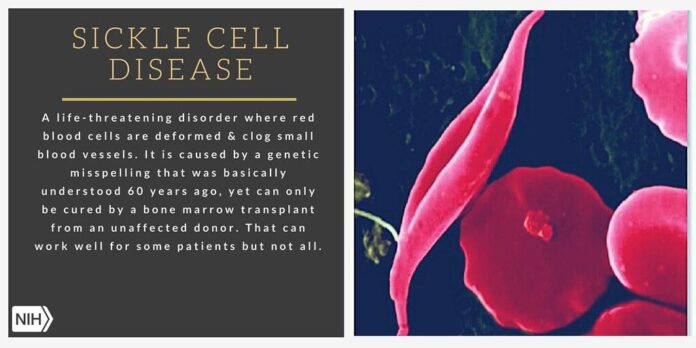
Understanding Sickle Cell Disease: Symptoms, Causes, and Treatment Options
Sickle cell disease is a genetic disorder that affects the red blood cells. It is mainly seen in people of African and Mediterranean descent. The disease is characterized by abnormally shaped red blood cells, which can cause a variety of health problems. In this article, we will take a closer look at the symptoms, causes, and treatment options for sickle cell disease.
Symptoms of Sickle Cell Disease
Sickle cell disease can cause a wide range of symptoms, including:
– Pain crises: This is a hallmark symptom of sickle cell disease. The abnormally shaped red blood cells can get stuck in the blood vessels, causing intense pain. These pain episodes, also known as pain crises, can last for hours or even days.
– Fatigue: People with sickle cell disease often experience fatigue due to the lack of healthy red blood cells to carry oxygen throughout the body.
– Infections: Sickle cell disease can weaken the immune system, making patients more susceptible to infections.
– Hand-foot syndrome: This syndrome is characterized by swelling and pain in the hands and feet.
– Delayed growth: Sickle cell disease can affect the growth and development of children.
– Vision problems: Some people with sickle cell disease may experience vision problems due to damage to the blood vessels in the eyes.
Causes of Sickle Cell Disease
Sickle cell disease is caused by a mutation in the gene that produces hemoglobin, the protein that carries oxygen in the red blood cells. This mutation causes the red blood cells to become rigid and sticky, and take on a crescent or sickle shape. These abnormally shaped cells can get stuck in the blood vessels, leading to a range of health problems.
Sickle cell disease is an inherited condition, which means it is passed down from parents to their children. In order to develop sickle cell disease, a person must inherit two copies of the defective gene, one from each parent. If a person inherits only one copy of the defective gene, they will have sickle cell trait, which is usually a milder form of the disease.
Treatment Options for Sickle Cell Disease
There is currently no cure for sickle cell disease, but there are several treatment options available to help manage the symptoms and complications of the condition.
– Pain management: Pain crises are a major concern for people with sickle cell disease. Treatment for pain crises may include medication, hydration, and blood transfusions.
– Hydroxyurea: This medication can help reduce the frequency and severity of pain crises in some people with sickle cell disease.
– Blood transfusions: In severe cases of sickle cell disease, regular blood transfusions may be necessary to prevent complications such as stroke and organ damage.
– Bone marrow transplant: This procedure can cure sickle cell disease, but it carries significant risks and is not an option for all patients.
– Preventive antibiotics: People with sickle cell disease are at higher risk for infections, so they may be prescribed antibiotics to prevent bacterial infections.
– Supportive care: Managing the complications of sickle cell disease often requires a team approach, including specialists in hematology, pain management, and other relevant medical fields.
It is important for people with sickle cell disease to work closely with their healthcare team to develop a treatment plan that meets their specific needs and goals.
Conclusion
Sickle cell disease is a complex and challenging condition that can cause a wide range of symptoms and complications. While there is currently no cure for the disease, there are several treatment options available to help manage the symptoms and improve the quality of life for people with sickle cell disease. It is important for patients to work closely with their healthcare team to develop a comprehensive treatment plan that meets their specific needs and goals. With the right support and care, people with sickle cell disease can lead full and active lives.












